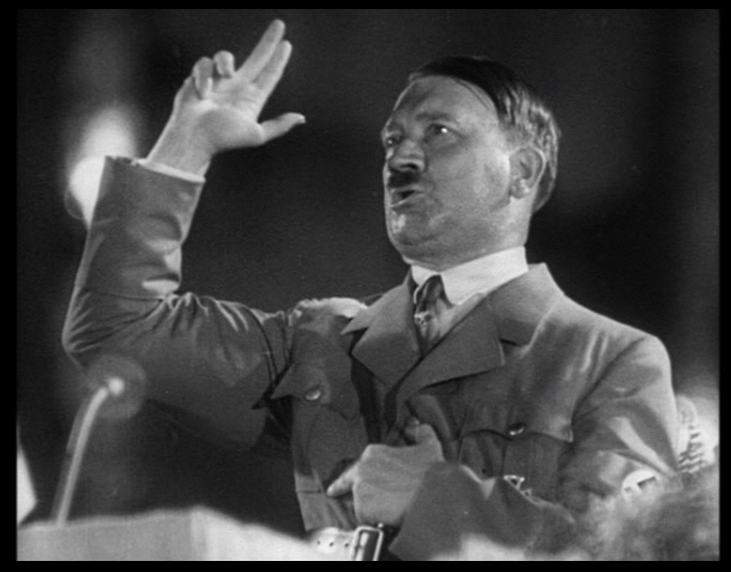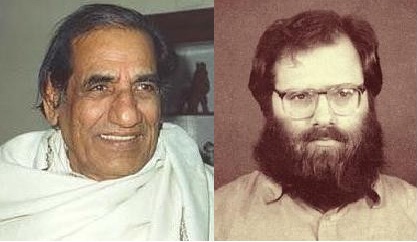His Kindness
Secularists like to bandy about the hateful stereotype of Hindu revivalists as anti-Muslim and anti-Christian hate-mongers. The type does exist in reality, here and there, though in most cases it is more alive in the eye of the beholder. At any rate, it does not describe Mr. Goel at all.
Alright, I’ll concede a single instance where Mr. Goel explicitly expressed his “hate” for a non-Hindu. However, this didn’t concern a real human being but an icon: Mother Teresa. He had met her in person in Kolkata long before she became that icon, and had formed a distinctly negative opinion of her.
In 1992, on the India-bound airplane, I had met a former fellow-student of mine in the company of her fiancé, out for a tropical holiday before getting married. I checked with Mr. Goel if they were welcome and then took them along to his house for dinner.
Rather naïvely, the young lady enumerated the handful of things she knew about India, inevitably mentioning the venerated Mother Teresa. She wasn’t ready for the oration which Mr. Goel gave in reply, listing in a crescendo everything that was wrong with Teresa’s saintly aura, and culminating in a total condemnation: “I hate her!” Oddly, this was the opening to a very fruitful conversation, of which my friend related afterwards: “God, this man seems to know everything! In his presence, I feel so small.”
As a critic of destructive ideologies and their mendacious cant, Sita Ram Goel was sharp and unforgiving. Yet, when it came to the people who were the captives of these ideologies, he could be very mild. At the office, he frequently entertained a Shiite Muslim friend, one Mr. Naqvi, who conspiratorially revealed to me a belief apparently extant among some Shiites, viz. that the Quran hadn’t really been revealed to Mohammed, but to Ali, who in his generosity left the honour to Mohammed.
He was also friends with some Christian clerics and served for years as the treasurer of the Christian-dominated Abhishiktananda Society for Hindu-Christian dialogue. When he heard of riots, he cynically observed how they were logical extensions of Islamic politics in India, but at the same time his heart shrunk at the thought of all those people dying, Muslims as well as Hindus.
In fact, these two seemingly contradictory traits were logically connected. Being hard on ideology allows for being mild on people. Conversely, those who are harsh on Muslims are typically soft-brains in their judgment of Islam. In the post-Godhra riots of 2002, Gujaratis brought up on a diet of Gandhian sentimentalism burst out in violence against their Muslim neighbours. On some Hindu nationalist forums, you can see outpourings of resentment against Muslims, vows to “teach them a lesson”, interspersed with laudatory claims about Islam and the Prophet, purportedly the pitiable objects of “distortion” by fanatical mullahs.
I gathered the impression of a direct causal connection between Mr. Goel’s fellow-feeling for his countrymen, Hindu as well as non-Hindu, and his deep knowledge of his society. He truly had the finger on the pulse of his people.
Real knowledge predicts, and Mr. Goel was rarely wrong in his predictions about the performance of public figures nor even about election results. Thus, the BJP’s actual conduct in government in 1998-2004, while making a total mockery of all the dramatic predictions by the secularist and Western “experts”, fully bore out his own assessment of the clueless Hindutva politicians. After talking with him, most of us always came away with the feeling that this man really has the answers.
Fascism vs. Freedom
About Mr. Goel’s formative years, the only information I dispose of is what he himself told me, except for a few stray utterances by Ram Swarup and by Girilal Jain. He himself used to say that all consequential details of his young days can be found in his writings, especially in the booklet How I Became a Hindu. There is absolutely no reason to disbelieve or doubt his testimony, but for the sake of historiographical propriety, I call on the few surviving people who knew him then to come forward with their story.

Since in the present heated climate it is nearly impossible to discuss Hindu revivalism without some Communist dinosaur shrieking and hissing “fascism” somewhere, it may be useful to mention some anecdotes from the 1940s. Starting with one from the 1950s.
Once during his years as an anti-Communist writer in Kolkata, Mr. Goel was approached by a couple who praised him for his anti-Communist work, a compliment gracefully accepted. But when they, a bhadralok gentleman and his European wife, started saying how Hitler had been right all along in fighting Communism, Mr. Goel ended the conversation. He wanted no business with Hitler nor with his nostalgics.
Later on, when editing chapter 5 of my book The Saffron Swastika, he mentioned this meeting to me and remarked (possibly only realizing right then) that they had been none other than the subjects of that chapter, Dr. Asit Krishna Mukherji and his French wife, Dr. Savitri Devi, née Maximiani Portas, India’s foremost Nazi enthusiasts.
While few other Indians ever understood and supported Nazism as a full-blown ideology, there were millions who had applauded the military successes of the Axis powers. At some point in World War 2, one of Goel’s professors in Delhi University announced to the students that the Japanese army was marching through the Gangetic plain and was expected to liberate Delhi in the next few days.
There was jubilation in class, for many Indians were hoping for a defeat of Britain at the hands of the Axis powers. Only Goel remained sceptical. It was but one of the many silly wartime rumours that were doing the rounds then and exciting the minds.
When the German and Japanese Armies were in retreat, people in the tea stalls were speculating that the gains made by the Allies were only temporary: “Now Hitler will use his secret weapon…”
But young Goel laughed it off, pointing out that the Axis powers were locked in and cut off from basic supplies like petrol and, increasingly, even food: no matter how bravely they might fight, the basic material data of their situation made their defeat inevitable.
That was the quintessential Sita Ram Goel: deeply realistic, always with an eye for the basic material facts which constrain the options available to the human players on the world stage.

Later on, he was to develop an analogous attention for basic doctrinal data whenever evaluating confrontations between competing political or religious movements. Thus, it is silly to judge or predict the moves by Islamic leaders purely from circumstantial or generally-human considerations, for there is bound to be at least a component of specifically Islamic doctrine in their motives and actual behaviour.
Jihad was not the personal idiosyncrasy of some odd mullah, but a central component of Mohammed’s own normative teachings, bound to have some role in any Islamic strategy.
Goel’s realism was not a one-way attitude invariably resulting in conclusions we might consider alarmistic. Sometimes, on the contrary, it was reassuring. When people warned him that his anti-Communist writing might invite an assassination attempt from the notoriously pro-violence Communists, he calmly replied: “No, I’ve read my Lenin.”
In Communist doctrine, violence is not to be used at random and on a whim, but should be confined to the actual revolutionary phase of the struggle. As I recall Herbert Marcuse commenting on the terror campaign by his German followers Ulrike Meinhof and Andreas Baader in the 1970s: “Terror can be useful to rouse the masses and trigger events in a revolutionary situation, but not in the counterrevolutionary situation we now have.”
Sita Ram Goel rarely speculated, he dealt in facts. His closeness to basic facts was to provide a refreshing contrast with the free-for-all of history-writing and wishful political analysis by the Nehruvian secularists, who always ignored the borderline data in favour of their own dogmas.
At the end of World War 2, Ram Swarup, who was to become Goel’s mentor in anti-Communism but was then a rising star among leftist intellectuals, quit his job as a clerk for the British-Indian government.
He felt that with the Axis powers’ defeat on the horizon, working for the Allied war effort was changing its character from a fight against Fascism to mere collaboration with the British colonialists. A colleague asked him how he could abandon the struggle against a monster like Hitler. One sufficient answer would have been that by then, Hitler had practically been defeated already, apart from the fact that a few little Indian clerks weren’t very material to the outcome of the war anyway.
But Ram Swarup preferred to keep the debate at the level of principle and made a point about the Allied perception of Hitler instead: “The devil is never as black as he is made out to be.”
At a time when the socialist leader Subhas Bose was fighting alongside the Axis powers, this was actually a very moderate thing to say for an Indian socialist. Much to the despair of Western leftists, the Indian left has never accepted the Nazi-centric moral universe of the post-1945 West, with Hitler or collaboration with Hitler as the ultimate evil.
On the contrary, the Indian Communists have incorporated Bose’s heritage, included his Forward Bloc party in their Bengal coalition, named an airport after him and proposed one of his aged lieutenants (of the INA women’s brigade) as their candidate for the Indian presidency in 2002.
Official Nehruvian India has also made its peace with Bose and included him in its pantheon of anti-colonial leaders. It counts as only a minor circumstance that he collaborated with the Axis, for in essence he was an Indian freedom fighter, just as Japanese collaborator Ahmed Soekarno is revered as a freedom fighter and father of the nation in Indonesia.
With his incurable scepticism, Ram Swarup likewise refused to buy the Allied line that World War 2 was a holy war between good and evil. And to be sure: as bogeymen, Adolf Hitler and Josef Stalin were in the same league, except that Stalin was the bigger killer, while Winston Churchill and Franklin Roosevelt weren’t exactly choir boys either.
Denouncing Hitler as evil was easy, but evaluating his enemies as good was very difficult, at least for a man of Ram Swarup’s perceptiveness.
By contrast, Sita Ram Goel never shared this slightly relativistic position and kept Nazism firmly in his demon cabinet, even if sharing it with Communism from 1949 onwards. Unlike most Indians, he had judged Nazism negatively not only from the viewpoint of democracy and humanism, but also from the angle of India’s freedom. “The enemy of my enemy is my friend”: this was a seductive but simplistic principle, and it didn’t apply to Nazi Germany as the supposed enemy of colonial Britain.
Hitler strongly favoured the continuation of the British empire as a model of Germanic domination over the darker races. “If Britain wins, she will soon quit India, but if Hitler wins, we will never get our freedom”, the young historian Goel told his fellow-countrymen.
To be continued

